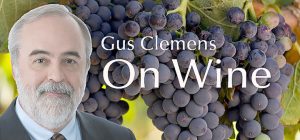Grape vines produce grapes in a cycle. They are dormant in winter, but there still is activity in the vineyard. The vines stockpile carbohydrates in anticipation of spring. Roots may push deeper—deep roots are what allows vines to survive and flourish.
On the human level, winter is ideal time to inspect the vineyard. It is the best time to identify sick plants that need to be pulled, plus pruning and refining vines to your training technique.
Dormancy typically ends in early spring. Bleeding—dripping sap—occurs where vines were cut during pruning. Soon, fragile buds appear: bud break. Buds are extremely delicate, spring hail storms their mortal enemy. In 2016 in Beaujolais, France, some vineyards lost 100% of their crop to hail.
Green shoots appear and will become leaves. Buds also grow into flowering shoots. Some viticulturists prune downward-facing shoots so all shoots grow upward. This has additional benefit of reducing the crop size and concentrating flavors.
Spring progresses, flowers appear. They are called “perfect flowers” because they pollinate themselves. Each flower can become a grape. Weather remains a threat. If it is too cloudy, or too cold, or too hot, flowers fail to open and do not pollinate. Un-pollinated flowers cannot become grapes. This catastrophe is called “shatter” in English and “coulure” in French. Malbec particularly is prone to it.
As spring becomes summer, flowers develop into young clusters. The berries are tiny, green, and very acidic to discourage animals and insects from eating them. Clusters develop into berry bunches.
Well into summer, a wonderful miracle happens. The grapes grow in size and begin to change color. This period is called vérasion (verre-ray-shun), and it is the time a vineyard is at its most beautiful. Just before vérasion, some grape farmers perform green harvesting where smaller, weaker grape bunches are removed so the vine can focus on the healthiest bunches.
While grapes are maturing, the wood of the vine also changes, turning brown and hardening. As both evolve, sugar levels in the grapes increase and acidity declines. Late August through fall is the time of truth and tension. Grape farmers spend their days in the vineyard, tasting grapes, measuring sugar levels, planning the harvest to coincide with the exact time sugar and acidity are in balance. Unlike some fruits, once picked, grapes do not continue to ripen.
Next week: Harvest and winemaking.
Last round: What goes up when spring rain comes down? Umbrellas. Wine time.

